| Columns Retired Columns & Blogs |
A look inside reveals sparseness I expected for $5000 US a little more meat this is something right out of an Outlaw Audio catalogue
I performed a full set of measurements on one of the two FMJ P49 samples I was sent (serial no. FPA4901087_14_52), using my Audio Precision SYS2722 system (see the January 2008 "As We See It"). As the P49 is specified as having a maximum power output of 200Wpc into 8 ohms, I preconditioned it before the measurements by running both channels at one-third that power, 67W, with a 1kHz signal into 8 ohms, for one hour. Following that period, the top panel was warm, at 109.8°F (43.3°C), though the vents covering the internal heatsinks were hotter, at 134.1°F (56.8°C). The THD+noise percentage at this power level was 0.001% with the amplifier cold, but 0.025% with it hot.
Peculiarly, I heard the P49 emit a mechanical whine at continuous levels greater than 54Wpc into 8 ohms. Recording this sound with a microphone held over the vents in the top panel revealed that it was related to the signal frequency; eg, with a 1kHz signal, the whine comprised tones at 2, 4, and 6kHz, etc.; with a 2kHz signal, the sound comprised tones at 4 and 8kHz, etc. This behavior was obviously related to the power-supply voltage-rail switching associated with the class-G output stage, as this switching occurs twice each half-cycle once the output power exceeds the threshold. But it is fair to note that I could hear nothing amiss in my listening room with music playing, only in the quiet surrounds of my tiny test lab with pure tones at high powers.
The P49's voltage gain at 1kHz into 8 ohms with unbalanced drive was exactly 31dB with the gain set to "31," 25dB with it set to "25." Unusually, the balanced gains were 6dB lower than these figures, though this agrees with the specification. In bridged-mono mode, the gain was 6dB higher for both unbalanced and balanced inputs. The unbalanced input impedance was 9.6k ohms from 20Hz to 20kHz, which will be a little on the low side for some tube preamplifiers; the balanced input impedance was 9.6k ohms per signal phase; ie, 19.2k ohms overall. Both unbalanced and balanced inputs preserved absolute polarity, the XLR jacks being wired with pin 2 hot.
The small-signal output impedance was a little higher than usual for a solid-state design, at 0.15 ohm at 20Hz and 1kHz, rising slightly to 0.19 ohm at 20kHz. (Unusually, in bridged-mono mode, the impedance was slightly lower despite there now being two output stages in series.) With stereo operation, the modulation of the P49's frequency response that results from the interaction between the amplifier's source impedance and the impedance of our standard simulated loudspeaker was a small ±0.15dB (fig.1, gray trace), while into an 8 ohm resistive load the response rolled off sharply above 40kHz, reaching –3dB at 100kHz (fig.1, blue and red traces). The response rolled off a little earlier into 2 ohms (green trace), but was still basically flat in the audioband. The response in bridged-mono mode was identical to that in stereo mode. Correlating with the wide small-signal bandwidth, the P49's reproduction of a 10kHz squarewave into 8 ohms had very short risetimes (fig.2). Though a small degree of overshoot can be seen in this graph, there is no ringing.
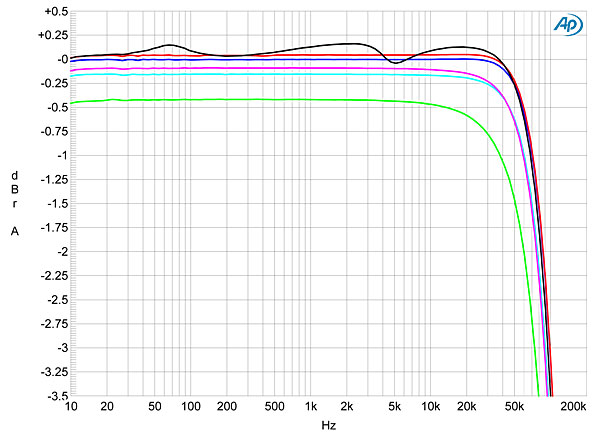
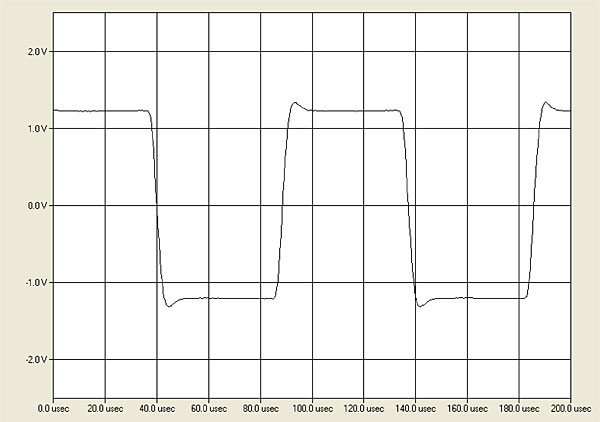
Channel separation was superb, at >100dB in both directions below 3kHz, and still >80dB at 20kHz. The unweighted, wideband signal/noise ratio, measured with the inputs shorted to ground, measured 78.7dB in the left channel, 79.9dB in the right. These ratios respectively improved to 84.5 and 87.7dB when the measurement bandwidth was restricted to the audioband, with A-weighting giving further improvement, to 88.1 and 90.1dB. The level of random noise in the P49's outputs was extremely low, but the slightly less good S/N ratios in the left channel were due to there being very low levels of spuriae present at 60Hz and its odd harmonics (fig.3). These are perhaps due to the signal circuitry for that channel being closer to the large toroidal power transformer. They were slightly higher in level when the amplifier was hot than when it was cold.
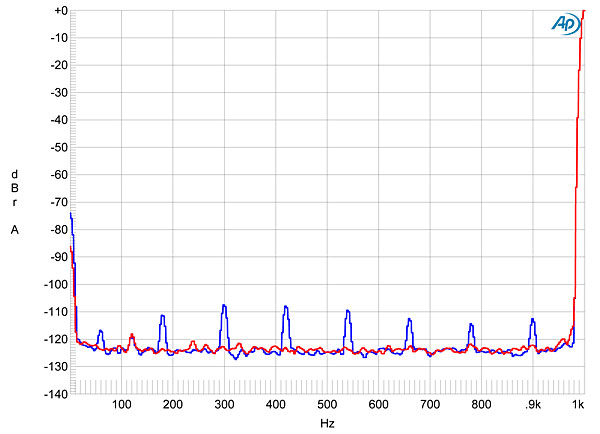
With one channel driven, the P49 comfortably exceeded its specified maximum power of 200Wpc into 8 ohms, clipping at 250W into 8 ohms or 24dBW (fig.4), with clipping defined as the output power when the THD+N present in the output reached 1%. Into 4 ohms (fig.5), the Arcam clipped at the specified 400W (23dBW), while in bridged-mono mode (fig.6) it clipped at 750W into 8 ohms (28.75dBW).
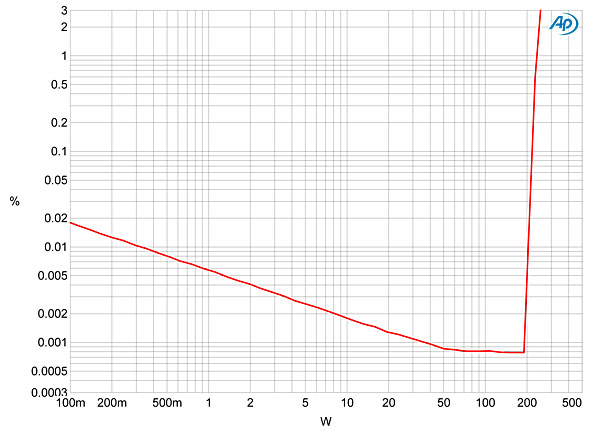
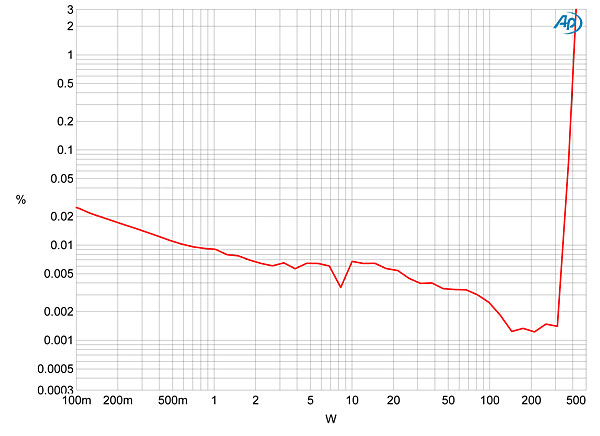
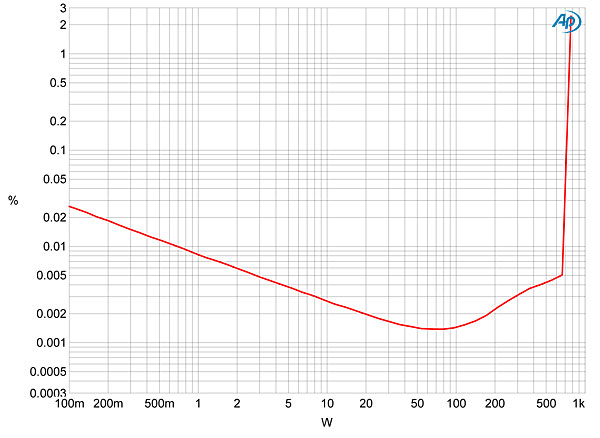
I examined how the percentage of THD+N changed with frequency at a level (17.9V, equivalent to 40W into 8 ohms, 80W into 4 ohms, and 160W into 2 ohms) where I could be sure I was measuring distortion rather than noise. Other than a small rise in the top two octaves, the distortion was very low in level into 8 and 4 ohms. (As with the noise, the distortion was slightly higher when the amplifier was hot.) The P49, however, was less comfortable driving the demanding 2 ohm load at this signal level (fig.7, gray trace). In bridged-mono mode (not shown), the top-octave rise in THD+N was greater, but was still 0.002% at a level of 67W into 8 ohms.
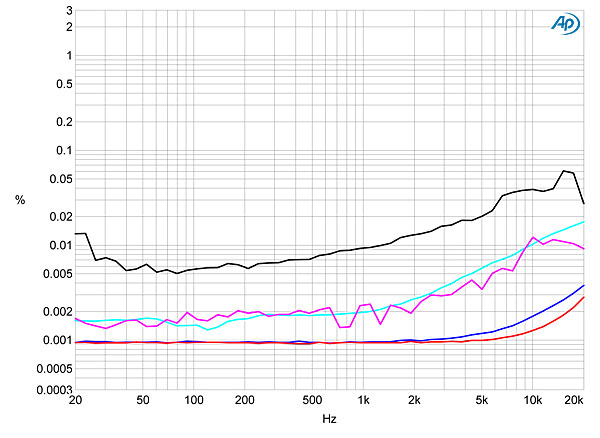
I looked at the spectral content of the distortion at a level—67Wpc into 8 ohms—where the class-G voltage-rail switching was operating. Even so, unlike the Creek Evolution 100A amplifier, reviewed in July 2015 (footnote 1), which has a similar output-stage topology, no switching artifacts can be seen in the residual distortion waveform (fig.8). This graph suggests that the distortion is primarily third-harmonic in nature, and while spectral analysis at a slightly higher level with the amplifier cold (fig.9) reveals that the second harmonic is also present, the left channel (blue trace) shows significantly lower distortion than the right (red). The second and third harmonics are higher in bridged-mono mode (fig.10), though it is fair to note that this graph was taken with the amplifier hot. Intermodulation distortion was very low, even at high power into 4 ohms (fig.11).
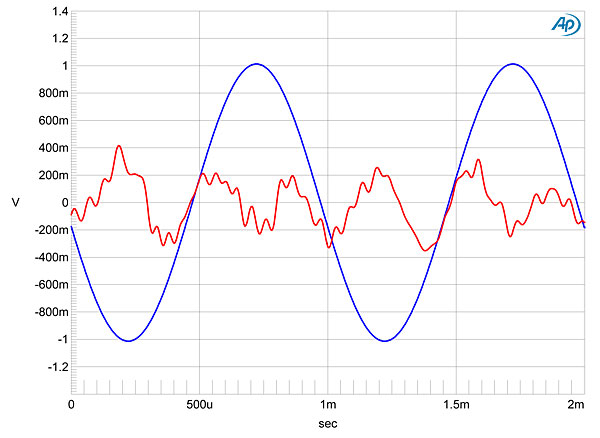
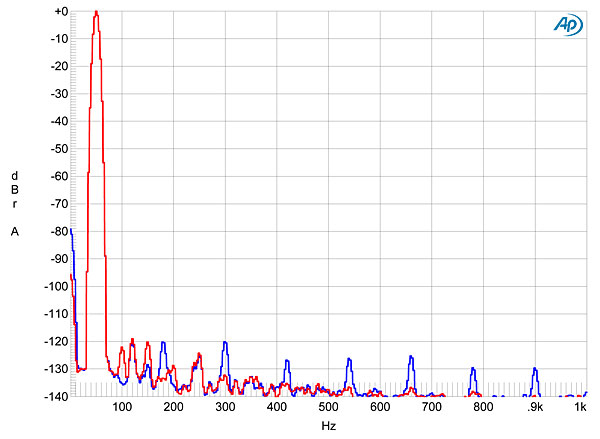
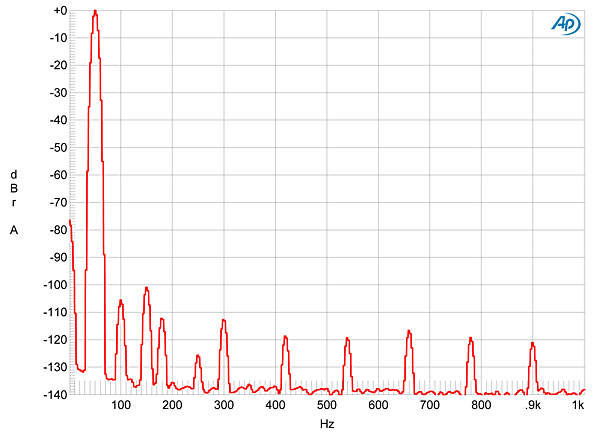
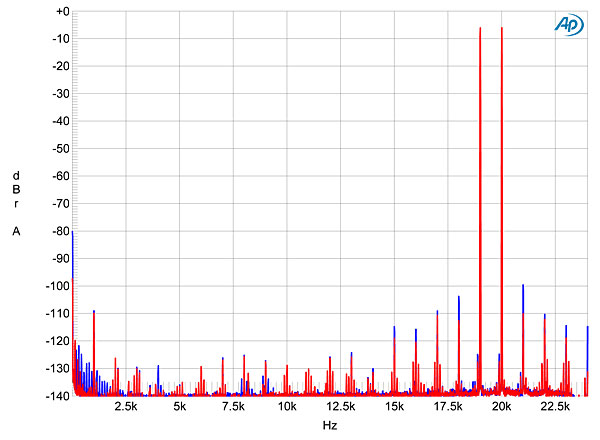
Its measured performance indicates that Arcam's FMJ P49 is a well-engineered amplifier, with no problems resulting from its use of a class-G output stage. Prolonged running at power levels greater than the class-G voltage-rail transition did appear to raise distortion levels, but not to anywhere near the point where they could lead to audible problems.— John Atkinson

A look inside reveals sparseness I expected for $5000 US a little more meat this is something right out of an Outlaw Audio catalogue

Just bought this unit. For 3400 pounds you would think Arcam would be able to put some nice proper black screws on the unit. Some on my unit are discoloured and other are scratched up. Who know how the unit looks inside?